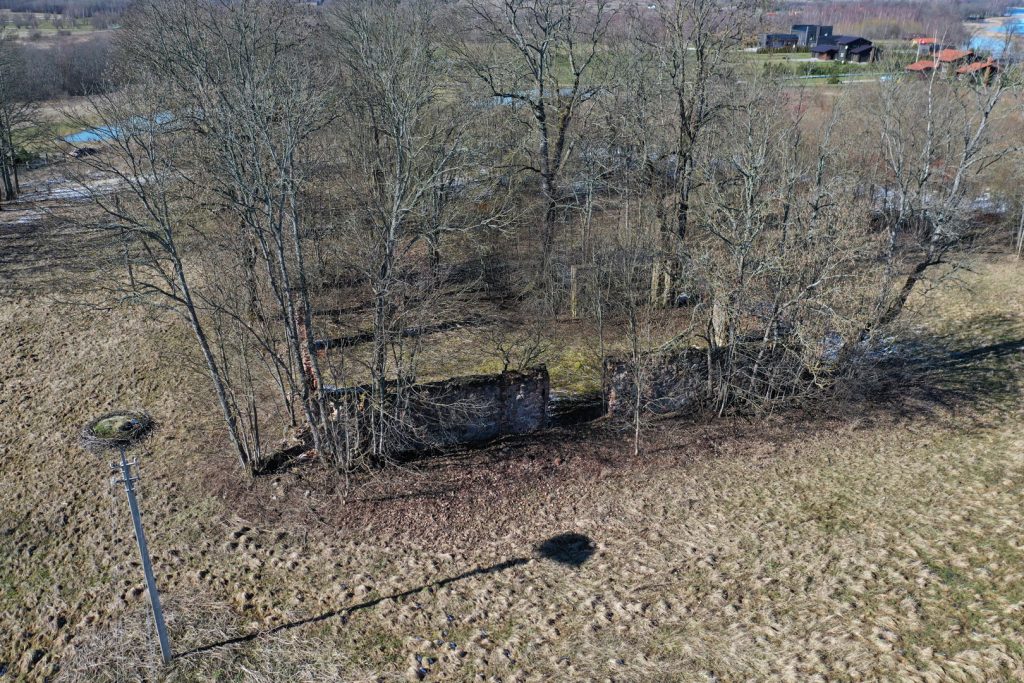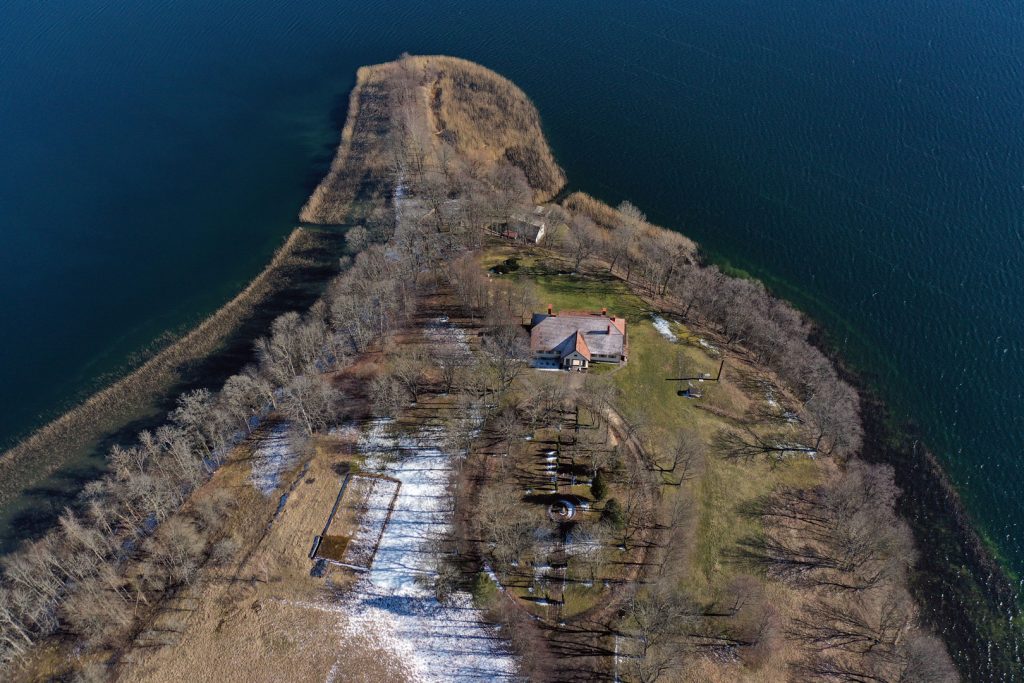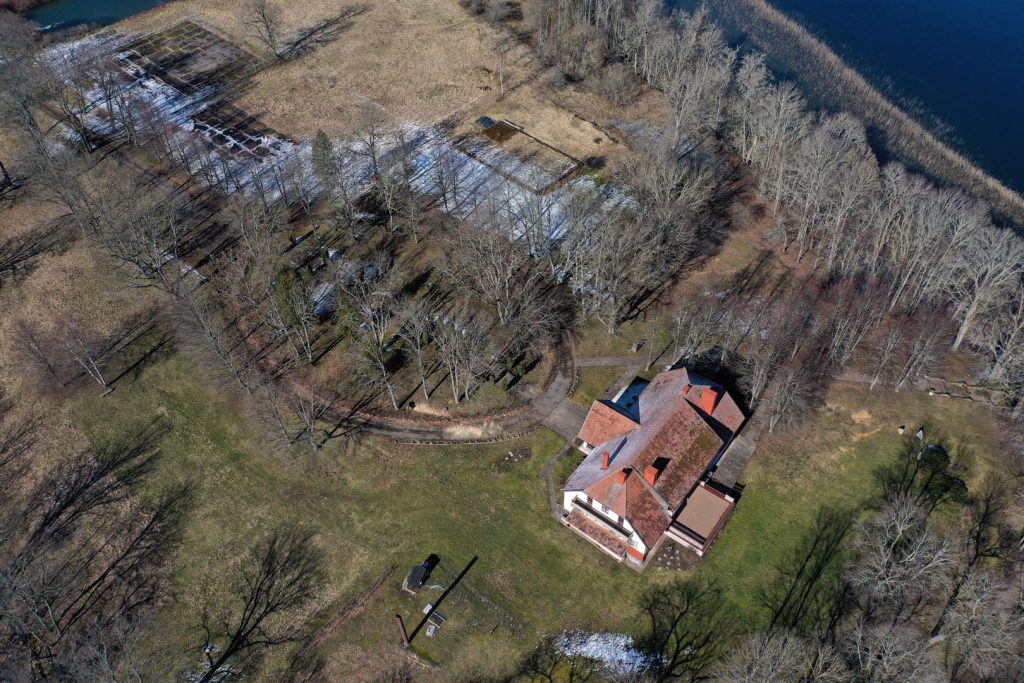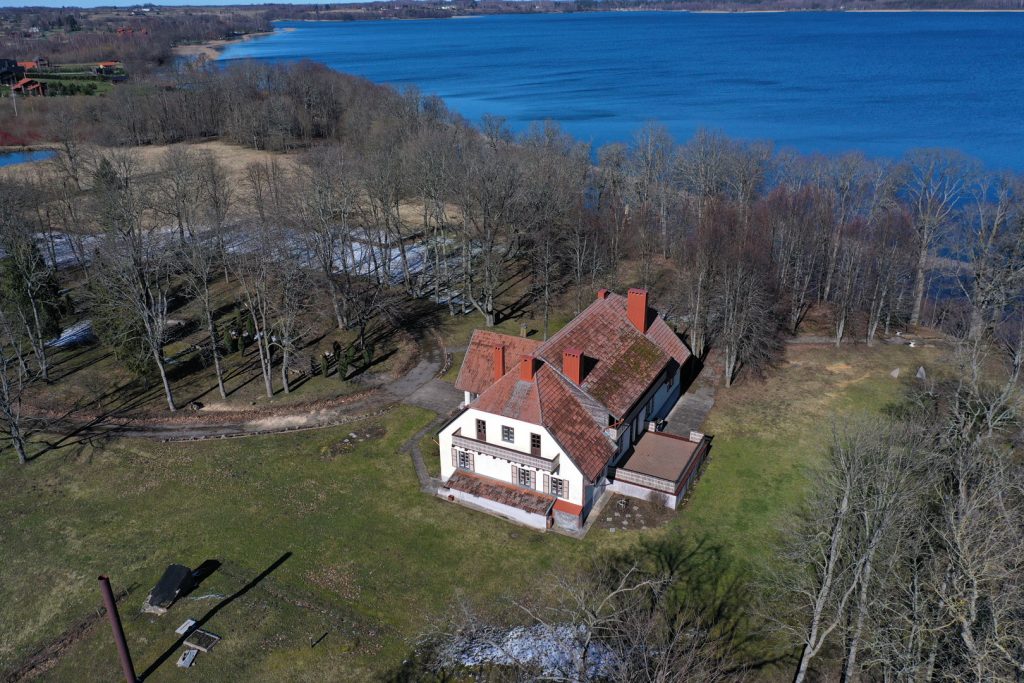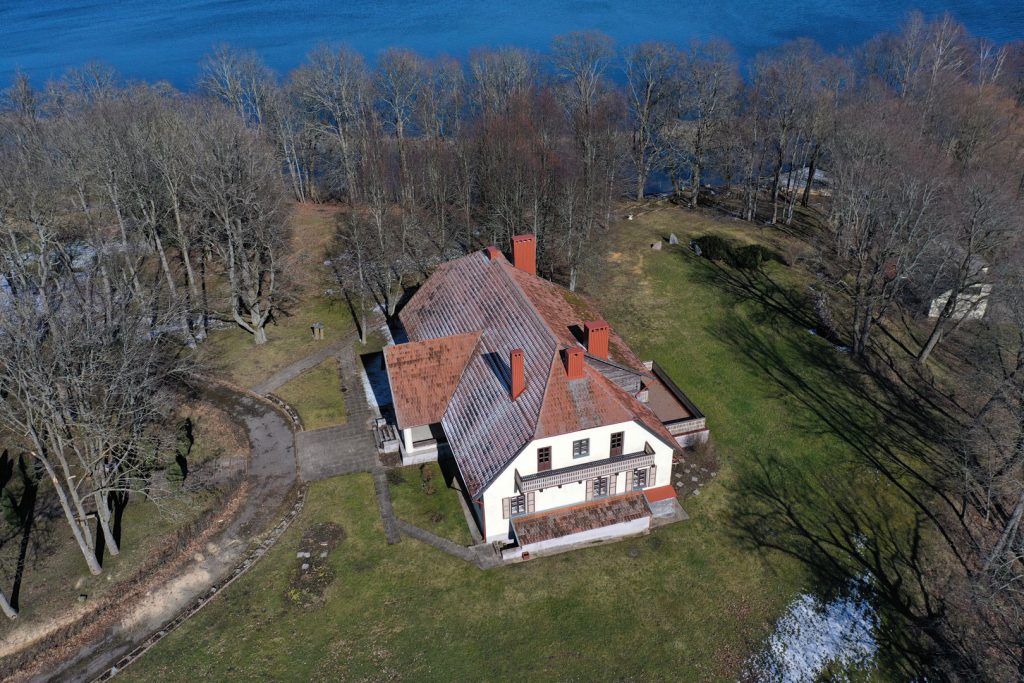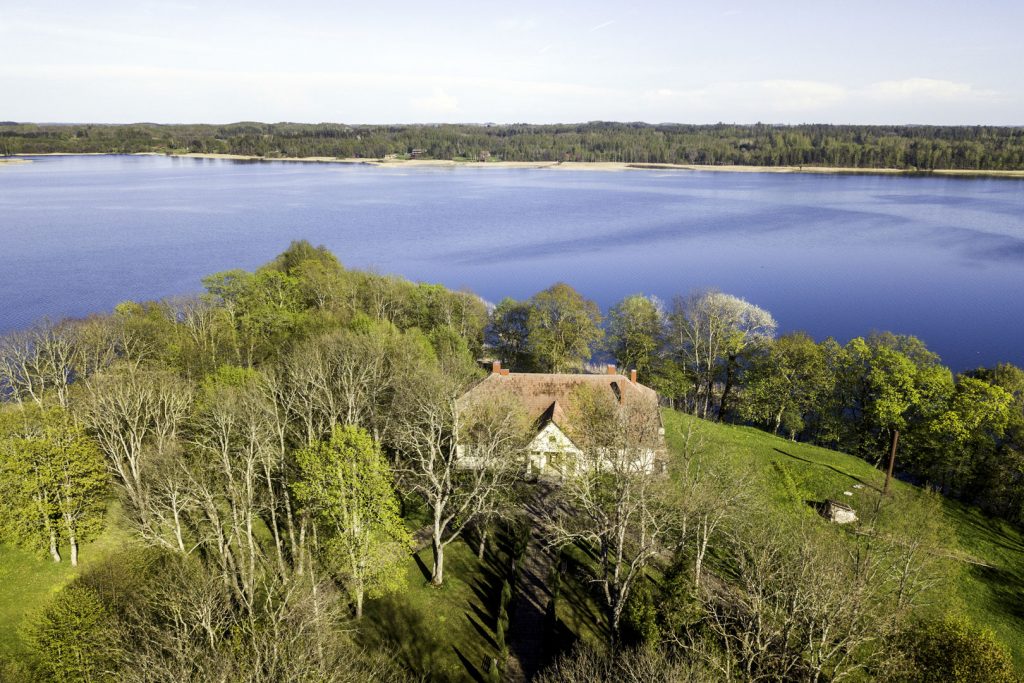Bikuškis manor
The homestead of Bikuškis manor is located on the peninsula of the lake Alaušas, on the promontory of the western bank whose steep slopes go down into the lake and in the south-west into the ravine. In the written sources Bikuškis manor was mentioned already in the middle of the XIVc. It is thought that the homestead was one of very few residences with brick buildings in the XVIIc.
In the XVIIc. the manor belonged to the Radvilos, later to the voivode of Trakai Tadas Oginskis, and in the XVIIIc. to the Prosinskiai, who managed to get a privilege from King Stanislovas Augustas Poniatovskis to establish a township next to the manor. According to historical sources, in 1782 Elžbieta Prošinskienė built a chapel next to the lake which was handled by a priest, the chaplain of the manor. At the end of the XVIIIc. the manor belonged to the Plevakai, at the beginning of the XIXc. to the Beneckiai, later to the descendants of the Beneckiai, the Drazdauskai. At the end of the XIXc. the manor owned the villages of Juliškis, Kiemeniškės, Malėnai, Novosiolkai, Sirutiškis, Toleikiai; there operated a distillery, a large smithy and the manor also owned more than 500ha of land. At the beginning of the XXc. the homestead was owned by the Puzinauskai, before the war, by a doctor Povilas Svilas who was married to Puzinauskaitė.
After the WWII the homestead of the manor belonged to Sudeikiai collective farm, since 1974 to Utena construction trust. During 1976-1979 Bikuškis manor was under major reconstruction. The manor house was reconstructed, the remains of the brick buildings from the XVIIc., the house for farmhands (1980) and the barn were demolished, new stairs were installed, a bathhouse was built and a sports ground was installed. In 1992 R. Svilas, who lived in Klaipėda, regained Bikuškis manor: the palace, granary, threshing-floor barn, 77ha of land. After his death the manor was inherited by testament by Gintaras Eugenijus Gruodis.
Foundations and the remains of masonry mark the demolished buildings. They formed two rectangular yards: in the west – two sheds, a barn and the remaining granary; in the east – the stables, the house for farmhands, the manor house and the smithy.
Now the homestead is formed by three buildings or their remains from the times of the manor – the manor palace from the beginning of the XIXc. (in the style of folk classicism), the threshing-floor barn of the XVIIIc. which was rebuilt in the end of the XIXc., and the granary built as an outbuilding.
Bikuškis manor park is the part of the old manor park. The total area is 10.9ha, 3.5ha is overgrown with trees: maples, beeches, elms, linden trees, ash trees, thorn trees and other trees.
Since 1996 the manor has been owned by its inheritor Gintaras Eugenijus Gruodis. Seeking to revive intangible heritage – manor’s cultural treasures, the current owners of the manor, Dalia and Gintaras Gruodis, using their own money and efforts repaired the manor which was neglected by its former inhabitants, tidied the environment, returned the manor its former aura. The manor is known for its original cultural activities: here a park of granite sculptures is being created, plain airs and exhibitions of professional painters take place, theater performances, symphony and chamber music concerts attract great success. In the manor there is an art gallery. Conferences on preserving manors and revival of cultural traditions of manors are organized. The manor has revived and become not only the miracle of nature, but also the object of history and culture.
In 2009, Bikuškis manor homestead was announced a state-protected object of cultural heritage.
